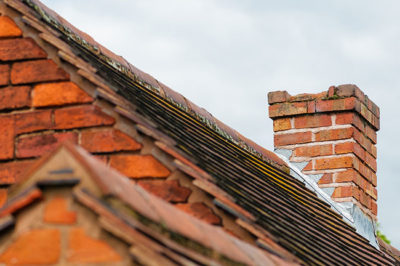How to Make Sure Your Chimney Flashing is Leak Proof
 Flashing surrounds your chimney and adjoining roof to keep rainwater from entering your home. A leaking flashing is a common problem and can cause a lot of damage if left unattended, requiring the work of a roofing contractor. By understanding the aspects of flashing, you can determine if your flashing is leak-proof or in need of repair or replacement.
Flashing surrounds your chimney and adjoining roof to keep rainwater from entering your home. A leaking flashing is a common problem and can cause a lot of damage if left unattended, requiring the work of a roofing contractor. By understanding the aspects of flashing, you can determine if your flashing is leak-proof or in need of repair or replacement.
What is Flashing?
Flashing is any type of material that is waterproof. Chimney flashing can consist of sheet metals, flexible fibers or plastic. Combined with a compound for sealing, flashing provides a barrier against water and moisture. Without a proper seal around the chimney, rainwater can pour into a home, causing wood rot and attracting moisture hunting insects.
What Causes Flashing to Fail?
Some flashing materials deteriorate with time and exposure to the elements. They may crack or pull away from the chimney, leaving areas where water can flow inside. Flashing may not have been properly installed and there are small gaps instead of forming a tight barrier.
Tar is a substance that was once used in forming a seal around a chimney. However, as time passes, tar turns hard and cracks, leaving an opening for water and moisture to get inside of a home.
How to Know if Flashing is Leaking?
Leaks can also be determined by climbing into the attic and checking for damp areas. Contractors often provide a free service to homeowners that are worried about flashing leaks. They can also determine if your flashing is at risk or has been improperly installed. Repairing flashing is a relatively simple and inexpensive project for a trained mason or roofer.
What is Proper Flashing?
Proper flashing begins with the right materials. A brick and mortar chimney will only accept certain metals that will not corrode due to the wet mortar. Asphalt or metal roofing must also be considered as part of the equation. Aluminum is a common material used in replacing flashing. Polyvinyl chlorides (PVC) are also preferred by many contractors.
Roofers or brick masons are often experienced in installing flashing. The slope of the roof, existing structures, and compatible materials have to be weighed carefully to determine what each individual flashing job requires.
Waterproof materials, flexible sealants, and qualified craftsmen can form a superb moisture barrier around your chimney and roof and guarantee it to last.
How Area Climates Affect Flashing
Different parts of the country play a crucial role in flashing. For instance, the Midwest can have sub-zero temperatures and snow-covered roofs. Ice and water shield protection should be added to the list of flashing materials used in colder areas. There are different types of ice and water shield flashing materials that are recommended according to your climate.
Having the right flashing installed can save thousands of dollars in interior repairs. If you have never had your flashing checked for damage, now would be a great time to act. Keeping your home free from the outdoor elements can eliminate major repairs later.
Be proactive and call an expert construction company today. All-Nu Construction can quickly make a determination on whether or not your flashing is failing. The call is free, the estimate is free, and peace of mind is priceless.

